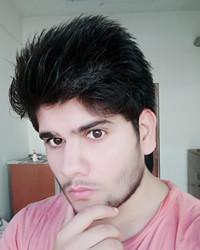Starting in the 5th century, there was a massive attack by the White Huns in what is now northern and northwestern India and Pakistan. About a century later the reigning Hindu-based Gupta Empire broke up, leaving the Subcontinent vulnerable to Muslim invaders from the north. As time went on, invaders took over land and integrated with the settled peoples of this region. Tribal leaders, especially those involved with defense, were accepted as Kshatriya, the second highest varna (major type of castes) in Hindu society, while their followers became the fourth and lowest varna. Priests became the Brahmins, the highest of the four varnas.
The Rajputs, who were part of the Kshatriya varna, became politically important in the seventh century. From around 800 AD Rajput dynasties ruled northern India. Petty Rajput kingdoms were the main obstacle for Muslim domination of the Hindu subcontinent. For more than 500 years Rajputs were the warriors who defended kingdoms from invaders and conquered others. When possible, Rajputs settled down, became nobles, and enjoyed the lives of landed gentry.
Over a period of a couple hundred years, invaders penetrated the Rajput wall that protected the Subcontinent. Some Rajput subgroups converted to Islam during this time. The British Raj took over the Islamic Moghul Empire in South Asia. During their rule, which ended in 1947, the British recruited Rajputs into their military units. By the 1930s the Indian census stopped noting that someone is Rajput, so Rajput lineage has been less clear ever since.
In the early 1970s, Indian Prime Minister Indira Gandhi abolished Rajput titles and property rights. The Rajputs have kept alive their proud history of conquest, bravery and military might.
Hindu Rajputs are concentrated in India's northwestern state of Rajasthan, though there are Rajputs all over the country.
Hindu Rajputs have a privileged position which is being eliminated. Rajputs generally do not do cultivation but have lower castes farm their land. Because many have lost their land after 1947, Rajputs have needed to look elsewhere for their livelihood. Some have become shop owners or common laborers. Rajputs encourage their sons and daughters to obtain graduate degrees and enter careers like medicine, public administration, computer science, finance and engineering.
Rajput women earn money through weaving, embroidery and by making of handkerchiefs. Taking care of children is primarily the women's responsibility among Rajputs. For women, toe-rings, nose-pins and glass bangles are common symbols for being married. Hindu Rajputs marry within their group.
Forward caste Hindus often become devotees of several gods. Typically, Rajputs worship Shiva (the destroyer), Surya (the sun god), and Durga (the mother goddess). They also have patron gods to turn to for protection. They celebrate Dasahara, a festival dedicated to Durga. During this festival, they sacrifice a buffalo to celebrate this goddess' victory over a buffalo demon. To find spiritual answers, Hindus often turn to gurus.
No matter where Rajputs live, they need the humility to recognize their need for a savior.
Pray for the Rajput community to increasingly grow in awareness of Jesus and their need for Him.
Pray the Lord will give Rajputs a spiritual hunger, then satisfy that hunger.
Pray that these Rajputs will understand the value of becoming part of God's royal family.
Pray for a Holy Spirit led humility for all Rajput communities to fall at the feet of the King of kings.
Pray for a disciple making movement among every Rajput community in India.
Scripture Prayers for the Rajput (Hindu traditions) in India.
http://induhistory.blogspot.com/p/rajput-history.html
https://www.britannica.com/topic/Rajput
https://en.wikipedia.org/wiki/Rajput
http://allrajputyouthwing.weebly.com/muslim-rajputs-history.html
https://www.quora.com/What-is-the-diffe
| Profile Source: Joshua Project |












